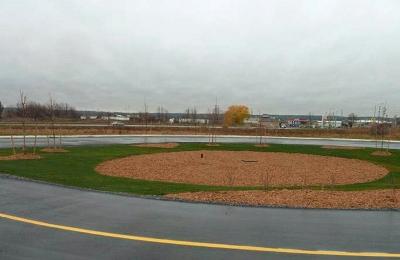
Staff at Ontario’s Ministry of Transportation (MTO) have received the Environmental Commissioner of Ontario’s (ECO) 2011 Recognition Award for using two environmentally beneficial innovations: bioretention cells and rubber modified asphalt (RMA). The innovations are used at the carpool lot in Beamsville, Ontario, located at the Queen Elizabeth Way and Ontario Street Interchange.
This project earned MTO the ECO Recognition Award for its benefits on stormwater management, waste diversion, and the promotion of carpooling.
“This is the second year in a row that MTO received this award,” said Gord Miller, Environmental Commissioner of Ontario. “The ministry provided a good example for municipalities, agencies and the public sector for use in future road planning and construction. I look forward to seeing more such innovative efforts to conserve our environment from other ministries.”
The bioretention cells mimic the natural hydrologic cycle. It infiltrates, filters, evaporates and detains sediments that flow from the pavement of the parking lot (runoff), while treating pollution at its source. Bioretention also acts as habitat for wildlife, improves air quality and reduces the urban heat island effect. Approximately 4,000 cubic metres of runoff is filtered through the system each year, equivalent to two Olympic sized swimming pools.
RMA is made from scrap rubber tires, ground and conventional hot mix asphalt. About four tonnes of scrap rubber tires were used for the Ontario Street carpool lot, preventing 624 tires from ending up in the landfill. The use of RMA in this project will help further develop the technology so scrap tires can be diverted from landfills and less virgin natural resources will be used in future paving projects.









